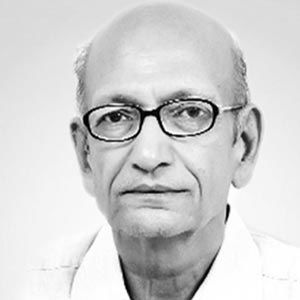Ailing private banks may need RBI pills

The banks will come under pressure due to the coronavirus lockdown. The public sector banks will most likely to be bailed out by the government, but private banks may fail.
The RBI had also placed in public knowledge the precarious condition of the finances of Yes Bank. It had removed Mr Rana Kapoor from Yes Banks' management and this was given due publicity in the media. This was a warning to the depositors. Those who did not heed have only themselves to blame. It could be argued that the RBI should have been more proactive and given such public warning much earlier. It appears that the RBI was faced with a dilemma. It could have pulled the rug earlier; or waited still more. The RBI would have been charged with not providing time to Yes Bank to raise the capital if it had pulled the rug earlier. On the other hand, the RBI would be charged with not acting soon enough it had allowed the Yes Bank to drift further. These are matters of assessment. One can attack the RBI no matter what decision it took. Such arguments are counterfactual and cannot be settled. All that can be said is that at a certain point the RBI felt that the situation was getting out of control and acted. The RBI, therefore, deserves credit for being alert in the matter
The banks will come under pressure due to the coronavirus lockdown. The public sector banks will most likely to be bailed out by the government, but private banks may fail. This situation gives us an opportunity to review the causes of the recent failure of Yes Bank and the steps taken by the RBI to save it.
The rate of interest paid by Yes Bank in September 2017 on savings accounts with deposits of less than Rs 1 lakh was 5 percent. At the same time, the State Bank of India was paying only 3.5 percent. A number of depositors put their monies in Yes Bank to benefit from these high rates of interest. How was Yes Bank able to provide a higher interest than other banks? It appears that Mr Rana Kapoor, the promoter of Yes Bank, played the game of "high risk high gain." He provided loans to such borrowers who could not raise the loans from other banks.
These included companies of Anil Ambani Group, Essel Group, DHFL, IL&FS and Vodafone that were hugely stressed at that time. Some of these have gone bankrupt since then. Knowledgeable sources say that Mr Kapoor never said "no" to a borrower. Perhaps he asked these "weak" borrowers to pay higher rate of interest on the monies borrowed. Needless to say these stressed borrowers may have offered to pay higher rates of interest. For example, a dealer who does not intend to pay the money at all will be happy to offer a price of Rs 25 per kilo for potatoes that may be selling in the market at only Rs 20 per kilo.
Similarly, the borrowing companies may have committed to pay higher rates of interest. Alas! Not only interest was not paid on time because of the stressed companies went under; this also led to a liquidity crisis and the Yes Bank went under too. However, the higher rate of interest paid by his borrower-clients — as long as they were able to pay it — enabled Yes Bank to pay a higher rate of interest to its depositor-clients as long as the rot was hidden. Thus, Yes Bank attracted the depositors by paying a higher 5 percent rate of interest on monies borrowed by it; lent that money on higher rate of interest to stressed companies; received higher rate of interest on these lending as long as they were able to pay; and used that earning to pay higher rate of interest of 5 percent on savings accounts against 3.5 percent paid by other banks. It was a high risk high gain game that failed.
The Reserve Bank of India (RBI) was seized of the problems at Yes Bank early. The RBI did not approve the reappointment of Mr Rana Kapoor about a year ago; and appointed an officer of its own as director to keep a watch on the situation. It was clear to the RBI that recovery of the monies lent by Yes Bank was in doubt. The RBI wanted Yes Bank to bring in new capital so that the bank had the cushion to absorb a possible default by the borrowers. The banks are required by the RBI to maintain adequate amount of capital in proportion to the monies lent by them. The underlying idea is that the equity capital of the bank will take a hit if borrower defaults.
For example, you are allowed to lend up to Rs 1,000 if your capital is Rs 200. You can borrow-and-lend the remaining Rs 80. The underlying assumption is that the bank would be able to withstand a default of loan up to Rs 200. This is called "Capital Adequacy Ratio." The RBI had noted that the borrowers of Yes Bank were stressed and might not be able to repay the borrowed monies. Therefore, RBI had been asking Yes Bank to bring in more capital to create a cushion to absorb such a risk. For example, let us say Yes Bank lent Rs 1,000 on a capital of Rs 200. Now, Rs 150 of the amount borrowed was not repaid. Is such a situation the capital of Rs 150 out of the total capital of Rs 200 will be wiped out still leaving a balance capital of Rs 50. Thus the RBI wanted Yes Bank to persuade some investor to put in, say, another Rs 100 as capital. The capital base of Yes Bank would then increase to Rs 300 and it would be able to bear the shock of non-repayment of borrowings of Rs 250. Yes Bank, however, was not able to raise such additional capital. Finally the RBI decided that it could not give more time and ordered a freeze of the business of Yes Bank.
The RBI had also placed in public knowledge the precarious condition of the finances of Yes Bank. It had removed Mr Rana Kapoor from Yes Banks' management and this was given due publicity in the media. This was a warning to the depositors. Those who did not heed have only themselves to blame. It could be argued that the RBI should have been more proactive and given such public warning much earlier. It appears that the RBI was faced with a dilemma. It could have pulled the rug earlier; or waited still more. The RBI would have been charged with not providing time to Yes Bank to raise the capital if it had pulled the rug earlier. On the other hand, the RBI would be charged with not acting soon enough it had allowed the Yes Bank to drift further. These are matters of assessment. One can attack the RBI no matter what decision it took. Such arguments are counterfactual and cannot be settled. All that can be said is that at a certain point the RBI felt that the situation was getting out of control and acted. The RBI, therefore, deserves credit for being alert in the matter.
The RBI will face multiple such situations in the coming time in view of the corona crisis. Demand will be raised that private banks should be nationalised so that people's money is not put to peril as has happened with the Yes Bank. The ground reality, however, is that if one out of ten private banks has failed; then actually nine out of ten public sector banks have already failed — only the latter failure is not visible. They are being kept alive by constant infusion of new capital by the government just as a sick person is kept alive in ICU with constant blood transfusion. Thus, while the RBI must be congratulated for steps taken by it to safeguard the small depositors, we must ask whether it has gone too far in trying to save the Yes Bank and whether it must save the banks that may fail in the coming times?
(The writer is formerly Professor of Economics at IIM, Bengaluru)

















